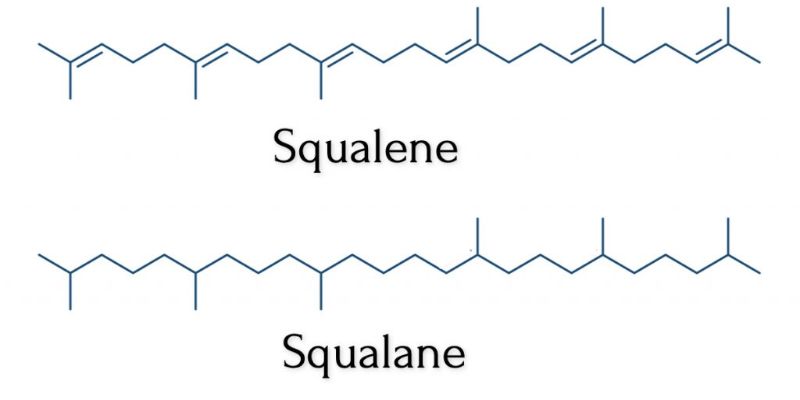Moisture is critical for youthful-looking skin, but even layering your favorite skin care product is insufficient in chilly weather. That is, you require a potent substance that will hydrate and protect your skin. Squalane is the first that springs to mind. What is it, how are squalene and squalane different, and what do they do for the skin? Continue reading to learn more.
Squalene vs. Squalane
If you look at the ingredients list of your skincare products, you’re likely to discover squalene or squalane. Although they do the same thing, the single letter makes a difference in terms of durability and efficacy.
What is squalene?
Squalene is a colorless poly-unsaturated hydrocarbon liquid that is naturally produced in many animals and plants, including human sebum. It makes up to about 10%-20% of skin oil. In essence, it is one of the natural lipids produced by your body to hydrate and preserve your skin. After the age of 30, our natural squalene production decreases, and we must obtain it from animals or plants. Unfortunately, because to its scarcity and effectiveness, it is frequently collected unethically—however, as long as you are careful about where you obtain it, everything is OK. Squalene was formerly derived nearly entirely from shark liver, but it is currently derived mostly from plant sources such as olive oil, rice, and sugarcane. Squalene and squalane are the two components. Both are effective, but squalane has a longer shelf life due to its greater stability.
What is squalane?
Squalane is a derivative of squalene and is much ligher which is much better option for acne-prone skin type. Squalene is not stable in its natural state, which is why it must go through a saturation process in order to be converted to squalene.
What do they do?
Their application in the realm of medicine has historically been limited to the treatment of wounds and skin problems. Nowadays, as a fun fact, squalene and squalane are commonly found in skin care product formulas as a highly-effective emollient and natural antioxidant because of their great efficacy. The use of squalane in skincare can help to minimize wrinkles, remove scars, reverse UV damage, lighten freckles, and erase skin pigmentation over an extended period of time. Squalene and squalane are both effective moisturizers, but squalene is thicker and hence more beneficial for extra-dry or older skin, whilst squalane is excellent for acne-prone or oily face.
5 squalane oil benefits
1. Reducing the appearance of fine lines
It aids in the reduction and prevention of the appearance of fine lines and wrinkles, resulting in a rejuvenated and refreshed appearance. Like you just woke up from the finest night’s sleep of your life!
2. Moisturizing skin
As a lightweight moisturizer, squalane helps to keep skin moisturized, supple, and bright in appearance. Given that it is chemically comparable to your skin’s natural oil, it tends to give just the perfect amount of hydration without being too greasy (or insufficient).
3. Softening texture
Because of its moisturizing and antioxidant qualities, squalane oil can really aid in the improvement of the appearance of your skin’s texture, resulting in skin that is silky smooth. Over time, it may even aid in the reduction of the appearance of pores and other imperfections on the skin.
4. Being non-comedogenic
It is used to determine whether or not a substance has the potential to clog your pores. Squalane is considered non-comedogenic, which means it is suitable for all skin types.
5.Reducing temporary redness
Squalane has a moderate effect on the skin and has been shown to temporarily decrease transient redness in some cases. As a result, you may expect it to reduce pain and produce an even, revitalized complexion.
Who should refrain from using squalane?
Because squalane is not a frequent irritant or allergen, it is unlikely to cause an allergic reaction in even the most sensitive skin. People with sensitive skin should be cautious when using new products, even if they believe they will not be very irritating. This is especially true if they have a history of allergic reactions to new products.

